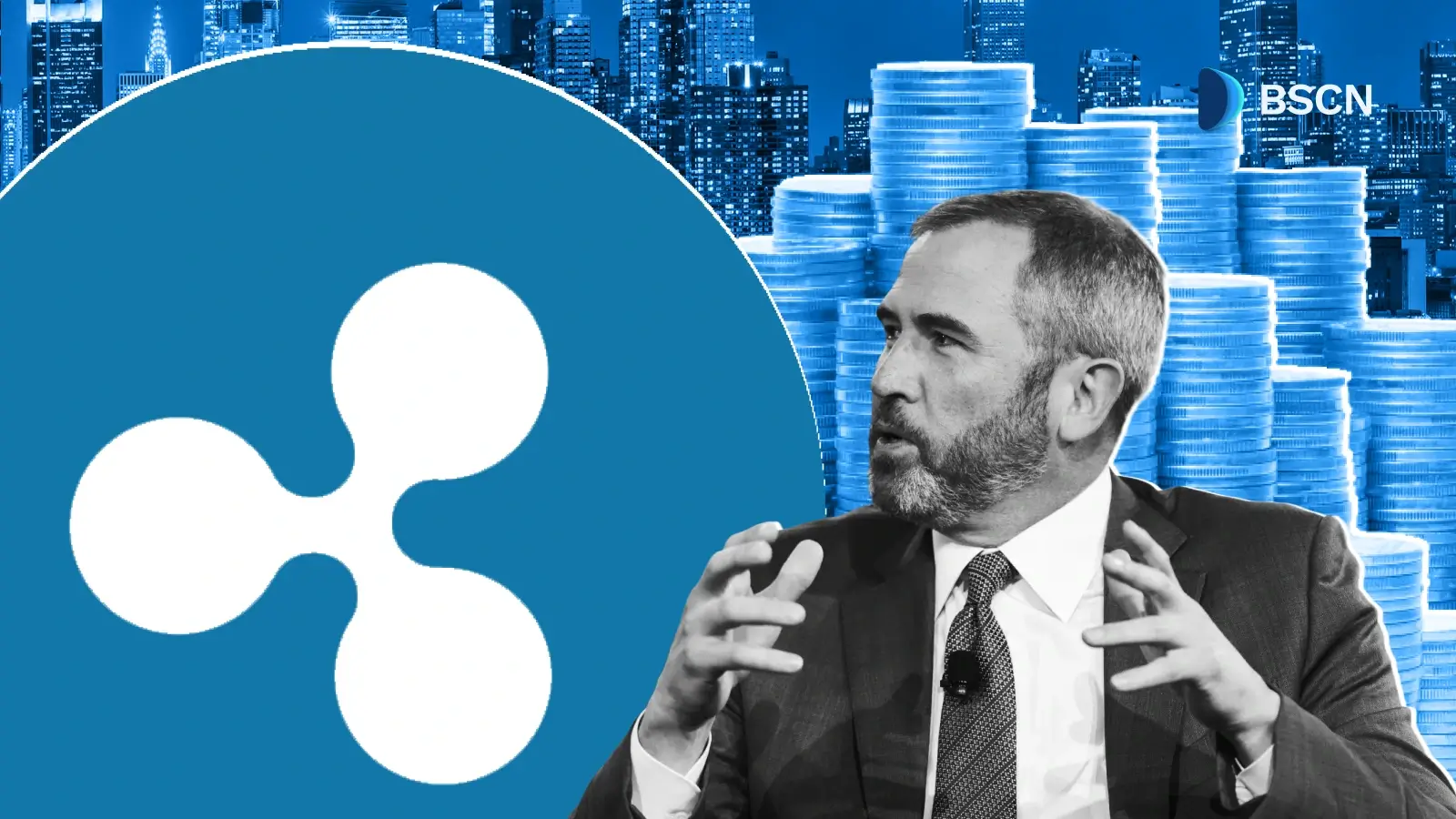News
Solana, Hedera, and Litecoin ETFs Set to Launch in the U.S. Despite Government Shutdown
by Soumen Datta
October 28, 2025

Solana, Hedera, and Litecoin ETFs are set to launch in the U.S., signaling progress for crypto funds despite the ongoing government shutdown.
Solana, Hedera, and Litecoin ETFs Launching in the U.S.
Solana (SOL), Hedera (HBAR), and Litecoin (LTC) exchange-traded funds (ETFs) are set to begin trading on U.S. exchanges this week, despite the ongoing federal government shutdown that has slowed financial regulation.
According to Bloomberg analyst Eric Balchunas, listing notices have appeared for Bitwise’s Solana ETF, and Canary Capital’s Litecoin and Hedera ETFs, with the funds expected to go live today, i.e Oct. 28. These listings mark the first wave of new spot crypto ETFs since Bitcoin and Ethereum ETFs were approved earlier this year.
Confirmed. The Exchange has just posted listing notices for Bitwise Solana, Canary Litecoin and Canary HBAR to launch TOMORROW and grayscale Solana to convert the day after. Assuming there’s not some last min SEC intervention, looks like this is happening. https://t.co/bHwRnc1jsn
— Eric Balchunas (@EricBalchunas) October 27, 2025
A crypto ETF allows investors to gain exposure to digital assets like Solana or Litecoin through traditional stock exchanges, without directly buying or storing the coins themselves.
A Quiet but Important Milestone for U.S. Crypto ETFs
This week’s listings caught the market off guard. Many assumed the U.S. Securities and Exchange Commission (SEC) would delay all new ETF activity due to limited operations during the government shutdown.
However, the agency appears to be moving ahead—albeit in a reduced capacity. The sudden appearance of listing notices suggests that ETF issuers may be using generic listing standards or similar mechanisms that allow launches without waiting for direct SEC approval.
In other words, some funds are going live under existing frameworks rather than through new approvals.
Who’s Launching and When
- Bitwise: Solana (SOL) ETF
- Canary Capital: Litecoin (LTC) and Hedera (HBAR) ETFs
- Grayscale: Converting its Solana Trust (GSOL) into an ETF on Wednesday
These ETFs follow earlier approvals for Bitcoin and Ethereum spot ETFs in January 2024, which were granted to major issuers such as BlackRock, ARK 21Shares, Fidelity, and VanEck.
With Solana, Hedera, and Litecoin now joining that list, crypto ETF offerings in the U.S. are expanding beyond the top two assets for the first time.
Why the Launch Matters
Spot crypto ETFs make it easier for institutional and retail investors to gain exposure to digital assets through regulated financial products.
They remove the need for direct custody, private keys, or managing wallets, while still tracking the real-time price of the underlying tokens.
For Solana, Hedera, and Litecoin, ETF listings mean:
- Increased liquidity from institutional trading desks.
- Higher visibility for their networks and tokenomics.
- Potential inflows from traditional finance investors looking to diversify beyond Bitcoin and Ethereum.
The Staking Element
Solana’s ETF may also include a staking feature, a structure that allows investors to earn rewards from the network’s proof-of-stake mechanism.
In staking, participants lock up tokens to help validate transactions and secure the blockchain, earning yield in return.
Earlier this year, the REX-Osprey Solana Staking ETF became the first U.S.-approved staking ETF, listing on the Cboe BZX Exchange. Bitwise’s version appears to follow a similar approach, reflecting the growing interest in staking as a regulated investment option.
Grayscale has also added staking functionality to its Solana Trust, following an SEC clarification that certain staking activities do not qualify as securities offerings.
How the ETFs Are Launching Despite the Shutdown
The SEC’s partial closure on October 1 initially froze several ETF applications. But guidance issued on October 9 outlined how issuers could still move forward under specific conditions.
According to people familiar with the process, companies that file S-1 registration statements without adding a “delaying amendment” can automatically go effective after 20 days, assuming no objections arise.
This means firms confident in their filings can proceed at their own risk, even without final SEC review.
One source explained that the firms are aware the SEC could comment later, but they’re not waiting for formal approval.
Before the shutdown, the SEC had already approved new listing standards for several exchanges, such as NYSE, Nasdaq, and Cboe. These rules allow certain crypto ETFs to list more quickly, bypassing the slower 19b-4 approval process.
The recent Form 8-A filings from Bitwise and Canary Capital suggest that issuers are now taking advantage of those updated standards.
A Form 8-A essentially incorporates an already filed S-1 registration to enable exchange listing. This method can be used if the issuer meets all relevant listing requirements.
Key Players and Timelines
- Bitwise: Leading the Solana ETF launch; may include staking functionality.
- Canary Capital: Launching both the Litecoin and Hedera ETFs, confirmed by CEO Steven McClurg.
- Grayscale: Converting its Solana Trust to a spot ETF (GSOL) midweek.
- Exchanges involved: NYSE, Nasdaq, and Cboe, depending on the fund.
Eleanor Terrett of Fox Business confirmed via X (formerly Twitter) that legal filings, including 8-A forms, have been completed and certified by the NYSE.
🚨JUST IN: @BitwiseInvest just filed its $SOL spot ETF registration statement, which will be visible on the @SECGov website tomorrow morning, I’m told.
— Eleanor Terrett (@EleanorTerrett) October 27, 2025
The @NYSE approved the 8‑A filing this morning, making the ETF effective and ready to launch tomorrow morning at market open. https://t.co/HYq4w4Ru9i
Despite the federal shutdown, these procedural filings were handled before the shutdown, allowing the launches to move forward smoothly.
Institutional Positioning
Institutions appear ready for this next phase of crypto integration. Funds previously allocated for altcoin exposure have not been withdrawn but are waiting for ETF timelines to finalize.
The arrival of Solana, Hedera, and Litecoin ETFs provides new diversification routes for portfolios already holding Bitcoin and Ethereum ETF positions.
Market analysts say the timing may also align with November regulatory milestones, when the SEC is expected to resume full operations and finalize classification guidance for altcoin ETFs.
Technical Impact on the Networks
Each of these networks represents a distinct layer of blockchain functionality:
- Solana (SOL): High-performance proof-of-stake network focused on speed and scalability.
- Hedera (HBAR): Enterprise-oriented distributed ledger using hashgraph consensus.
- Litecoin (LTC): One of the oldest proof-of-work blockchains, widely used for fast and low-fee transfers.
ETF exposure could support broader developer and investor confidence across these ecosystems, especially for Solana’s growing decentralized finance (DeFi) and staking sectors.
Broader Implications for U.S. Crypto Regulation
The ETF launches come as regulators continue aligning frameworks for digital asset oversight. The SEC and Commodity Futures Trading Commission (CFTC) have been coordinating more closely on defining asset classifications, particularly for proof-of-stake coins.
Globally, regions like the EU and Japan have already approved multi-asset crypto ETFs, putting pressure on U.S. regulators to streamline their approach.
These developments show that, even amid political and bureaucratic gridlock, institutional crypto access continues to expand through regulated instruments.
Conclusion
The launch of Solana, Hedera, and Litecoin ETFs in the U.S. marks another steady step in integrating digital assets into traditional finance.
While the timing coincides with a government shutdown, the filings and approvals suggest that issuers and exchanges are confident enough to move ahead under existing rules.
These ETFs expand investor access beyond Bitcoin and Ethereum, offering exposure to networks with active staking, enterprise-grade infrastructure, and established liquidity.
Resources:
Press release - Bitwise Launches BSOL, First Spot Solana ETP in U.S.; Aims To Stake 100% of Assets In-House, Powered by Helius, To Maximize Solana’s 7% Average Staking Rewards: https://www.businesswire.com/news/home/20251027087034/en/Bitwise-Launches-BSOL-First-Spot-Solana-ETP-in-U.S.-Aims-To-Stake-100-of-Assets-In-House-Powered-by-Helius-To-Maximize-Solanas-7-Average-Staking-Rewards
Canary Capital, Bitwise to launch first US altcoin ETFs despite shutdown - report by Reuters: https://www.reuters.com/legal/transactional/canary-capital-plans-launch-first-us-litecoin-hedera-spot-etfs-tuesday-2025-10-27/
US SEC’s new listing standards: https://www.sec.gov/files/rules/sro/nasdaq/2025/34-103995.pdf
Disclaimer
Disclaimer: The views expressed in this article do not necessarily represent the views of BSCN. The information provided in this article is for educational and entertainment purposes only and should not be construed as investment advice, or advice of any kind. BSCN assumes no responsibility for any investment decisions made based on the information provided in this article. If you believe that the article should be amended, please reach out to the BSCN team by emailing info@bsc.news.
Author

Soumen Datta
Soumen has been a crypto researcher since 2020 and holds a master’s in Physics. His writing and research has been published by publications such as CryptoSlate and DailyCoin, as well as BSCN. His areas of focus include Bitcoin, DeFi, and high-potential altcoins like Ethereum, Solana, XRP, and Chainlink. He combines analytical depth with journalistic clarity to deliver insights for both newcomers and seasoned crypto readers.
Related News
Latest News
10h : 4m ago
Solana ETF Interest Rise amid Market Downslide: Key Performance Update

12h : 19m ago
BNB Chain × YZi Labs Local Hack Series Went Live: Details

13h : 56m ago
Stable Launches Public Testnet: Steps to Engage

15h : 4m ago
Ripple Secures $500M Strategic Investment at $40B Valuation

17h : 4m ago
SBI Digital Markets Partners with Chainlink to Drive Institutional-Grade Tokenization Platform

November 5, 2025
What is Momentum Finance? Binance’s New Listing

November 5, 2025
Chainlink Kickstarts November with Multiple Innovations: A Look at The Protocol's Key Partnerships and New Features

November 5, 2025
ION Latest Update: New Online+ Update, CEO Insights, Key Partnerships, and More

